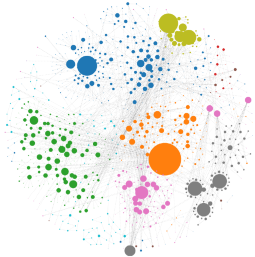On May 02 there were 147024 job postings open in the state of Texas. On June 02 there were 155582 job postings open in the state of Texas. The state of Texas experienced a 6% percent change in the number of total job postings open. The Dallas/Fort Worth region experienced the highest number of job postings open as of May 02 , and Dallas/Fort Worth region experienced the highest number of job postings open as of June 02 . San Angelo experienced the largest change in job postings over the May 2020 to June 02 time period .
The job postings open in the following Texas regions are outlined below:
Abilene : 38% change in job postings ( From 1295 openings on May 02 to 1788 openings on June 02 )
Amarillo : 14% change in job postings ( From 1850 openings on May 02 to 2110 openings on June 02 )
Austin : 25% change in job postings ( From 4848 openings on May 02 to 6049 openings on June 02 )
Beaumont : 29% change in job postings ( From 1658 openings on May 02 to 2131 openings on June 02 )
Bryan : 21% change in job postings ( From 1521 openings on May 02 to 1847 openings on June 02 )
Corpus Christi : -5% change in job postings ( From 5710 openings on May 02 to 5407 openings on June 02 )
Dallas/Fort Worth : 1% change in job postings ( From 43466 openings on May 02 to 44069 openings on June 02 )
Del Rio/Eagle Pass : 12% change in job postings ( From 284 openings on May 02 to 317 openings on June 02 )
El Paso : -18% change in job postings ( From 7671 openings on May 02 to 6307 openings on June 02 )
Houston/Galveston : 8% change in job postings ( From 39066 openings on May 02 to 42071 openings on June 02 )
Laredo : -16% change in job postings ( From 2465 openings on May 02 to 2065 openings on June 02 )
Lubbock : -3% change in job postings ( From 4358 openings on May 02 to 4216 openings on June 02 )
Lufkin/Nacogdoches : 16% change in job postings ( From 709 openings on May 02 to 825 openings on June 02 )
McAllen/Brownsville : 16% change in job postings ( From 1304 openings on May 02 to 1519 openings on June 02 )
Midland/Odessa : 14% change in job postings ( From 2496 openings on May 02 to 2856 openings on June 02 )
San Angelo : 44% change in job postings ( From 256 openings on May 02 to 369 openings on June 02 )
San Antonio : 8% change in job postings ( From 21012 openings on May 02 to 22788 openings on June 02 )
Sherman/Denison : 32% change in job postings ( From 699 openings on May 02 to 925 openings on June 02 )
Texarkana : 24% change in job postings ( From 821 openings on May 02 to 1016 openings on June 02 )
Tyler/Longview : 30% change in job postings ( From 2374 openings on May 02 to 3077 openings on June 02 )
Victoria : 30% change in job postings ( From 423 openings on May 02 to 548 openings on June 02 )
Waco/Temple/Killeen : 23% change in job postings ( From 1921 openings on May 02 to 2358 openings on June 02 )
Wichita Falls : 13% change in job postings ( From 817 openings on May 02 to 924 openings on June 02 )




